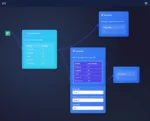
by tyler garrett | May 26, 2025 | Data Management
In today’s information-driven landscape, organizations rely heavily on their data warehouses as central repositories of truth, yet often struggle with consistency across relevant dimensions. Ensuring conformity dimension management is not merely a technical choice, but a strategic imperative. Misaligned dimensions across your processes lead to inaccurate analytics, lost operational efficiency, and hindered decision-making capabilities. By proactively managing conformity dimensions, organizations attain unified perspectives that drive better insights and foster informed strategic decisions. In this exploration, we’ll demystify conformity dimensions within your data warehouse environment, explain how to implement effective management strategies, and emphasize their powerful impact when combined with advanced analytics and streamlined governance frameworks. Let’s dive into empowering your organization by mastering your dimension management.
Understanding Conformity Dimensions in Data Warehousing
Before implementing best practices, understanding conformity dimensions is essential. Conformity dimensions are shared dimensions used across multiple fact tables or subject areas within a data warehouse. They facilitate consistency by serving as a common reference point providing uniformity in filtering, sorting, grouping, and analyzing diverse business processes. For decision-makers, conformity dimensions eliminate ambiguity, enabling clarity when interpreting insights from different departments or business units.
For instance, a “Customer” dimension leveraging identical attributes allows teams in finance, marketing, and sales to analyze data using equivalent definitions and parameters. This consistent structure improves communication, decision-making speeds, reduces misunderstandings, and enhances trust in your analytics. Unfortunately, many organizations overlook conformity dimensions’ power early on, resulting in a web of fragmented data structures, duplication of dimensions, and unnecessary complexities in database management. To further solidify your foundational knowledge, we recommend our article detailing foundational data warehousing terminology, A Beginner’s Guide to Data Warehousing.
Ultimately, well-implemented conformity dimensions deliver insights you can rely upon. They facilitate interdepartmental collaboration, reduce data silos, and elevate your analytics maturity to offer superior visibility throughout your organization.
The Strategic Value of Managing Conformity Dimensions
Effectively managing conformity dimensions is more than just good practice—it’s a competitive advantage. Done right, conformity dimension management ensures data consistency across critical business processes. This consistency aids significantly in cross-functional analytics, facilitating robust analysis and nuanced decision-making. Organizations mastering dimension conformity will benefit from reduced development complexity, increased agility to respond to evolving business needs, and improved computational performance.
In times of economic uncertainty or market shifts, agility within decision-making processes becomes vital. If each department maintains standalone or inconsistent definitions—like unique customer identifiers or disparate product coding—reconciling differences before insights emerge can cause costly delays. However, by consistently applying conformity dimension management, analytics become faster, insights more accurate, and action immediately attainable.
Moreover, conformity management directly connects back to robust data governance and data quality frameworks. The uniformity achieved helps embed data quality controls transparently across your analytics processes and establishes stable foundations for ambient data governance strategies. Decision-makers benefit significantly from seamless analytic integrity that conformity management provides, fostering heightened trust in their data-driven strategic roadmap.
Challenges Associated with Conformity Dimensions Implementation
Despite their strategic significance, conformity dimensions are not without challenges. Many enterprises find initiating conformity dimension management daunting due to historically siloed operational units and legacy data systems. Organizations with decentralized or legacy data environments might suffer from a wide array of fragmented data definitions and incompatible modeling schemes, thus requiring considerable groundwork upfront.
Ensuring conformity mandates substantial collaboration, robust communication between stakeholders, clear process documentation, and proactive leadership support. It necessitates meticulous coordination between IT professionals, analysts, and business executives to achieve precise alignment of definitions, structures, and specifications across organizational touchpoints.
Additionally, effective data resiliency becomes critical through rigorous pipeline automation and database management. Integrating processes like those discussed in our resource on streamlining database management is notably beneficial. Moreover, maintaining scalability across expanding data infrastructures is another hurdle. Dimensions must gracefully evolve with organizational growth and technological evolution without adding excessive management burden.
However, even amid these potential roadblocks, the challenges consonant dimension management presents also offer opportunities—establishing unified language, fostering team alignment toward shared goals, and laying solid foundations for advanced analytics maturity.
Best Practices for Effective Conformity Dimension Management
For successful conformity dimension management, organizations must adopt best practices that span cross-functional collaboration, rigorous modeling standards, and proactive data governance frameworks. Initially, organizations should invest efforts in creating standardized dimension architectures early in their analytics project lifecycles. Evidently defined standards managed centrally help teams avoid redundancy and pave efficient paths for future growth.
Another essential practice involves incorporating automated conformity checks within your wider data pipeline process. Strategically automating conformity checks using methodologies recommended in our extensive look into Pipeline as Code helps immediately expose dimensional inconsistencies, significantly reducing manual troubleshooting downtime and enhancing operational efficiency.
A well-orchestrated metadata management framework, accompanied by strong master data management systems, is equally key to maintaining conformity. Utilizing well-structured and annotated visualizations as outlined by our piece on annotations and references in explanatory visualizations, promotes clarity among stakeholders throughout your analytics lifecycle.
Collectively, these best practices empower consistent definitions across teams, unify department priorities, optimize functional interoperability, and streamline sophisticated analytical workflows.
Leveraging Advanced Analytics to Maximize Conformity Dimension Value
Once conformity dimensions are properly managed, leveraging advanced analytics becomes significantly more accessible and rewarding. Advanced analytical frameworks built on effective conformity management empower enterprise-wide decision intelligence and lead directly to improved insights accuracy. Standards-driven dimensions underpin effective predictive modeling, enterprise-wide dashboards, and self-serve analytics initiatives.
Organizations that merge conformity dimension management with our advanced analytics consulting services gain significant strategic advantages. Armed with clean and consistent dimensional foundations, your data scientists, analysts, and stakeholders can more effectively discover meaningful relationships, derive deep insights, and foster innovation through your analytics environment.
Furthermore, conformity dimensions enable organizations to exploit advanced visualization methods more effectively, such as those discussed in our comparison article dedicated to visualization grammar specification languages. Clear, correct analytical interpretations emerge more naturally in datasets structured around conformity.
Empowering Your Data-Focused Team through Skills Development
Finally, effective conformity dimension management incorporates continuous team skills development. Professionals involved in dimension management require proficiency in data modeling, data warehousing due diligence, SQL proficiency—as explained comprehensively in our overview of why learning SQL is valuable—and an understanding of automated pipelines as foundational skills.
Your team should regularly engage in professional development that helps foster industry-standard skills covering data management tools, integration automation languages, and advanced analytical practices tied to maintaining conformity dimensions. Embracing continual training ensures your conformity dimension strategy remains agile, relevant, and sustainable as your organization pursues its analytics maturity.
Looking Ahead: Continuous Innovation through Conformity Dimensions
Ultimately, conformity dimension management is a foundational element empowering long-term analytics innovation. By implementing best practices, overcoming challenges proactively, leveraging advanced analytics strategically, and investing continuously in team capabilities, your organization can stay agile and competitive within today’s rapidly evolving data landscape.
The ultimate strategic goal? Transform data warehousing from a cost center into a powerful collaborative engine propelling insightful decision-making and strategic differentiation. With conformity dimensions well-managed in your data warehouse framework, expect efficient analytics, improved accuracy, reduced errors, streamlined governance, meaningful innovation, and empowered strategic teams ready to face tomorrows analytics challenges head-on.
Thank you for your support, follow DEV3LOPCOM, LLC on LinkedIn and YouTube.

by tyler garrett | May 26, 2025 | Data Management
The modern enterprise landscape is increasingly driven by information, analytics, and strategic insights derived from data. Imagine your organization as an intricate orchestra, each instrument representing a unique business capability, and the data assets acting as essential musical notes. Without a clear map to show which notes belong to which instrument, chaos ensues, diminishing your organization’s competitive melody. A comprehensive business capability to data asset mapping registry creates a structured framework, aligning business activities and strategic goals to actionable data. This mapping is not just a technical exercise, but rather an essential strategic endeavor providing invaluable visibility into how your organization leverages data to fuel business operations and growth.
What is a Business Capability to Data Asset Mapping Registry?
A business capability to data asset mapping registry is a strategic tool that clearly documents and correlates specific business capabilities with their associated data assets. Each business capability represents a distinct activity or function essential to organizational operations. Mapping data assets systematically to these capabilities allows enterprises to see exactly how data empowers their business processes. This holistic view allows companies to clearly understand data dependencies and strategically align their data management practices with critical operations.
A comprehensive and meticulously maintained registry provides transparency and effectively alleviates confusion about data ownership and responsibilities. This clarity dramatically reduces redundancy efforts and helps decision-makers leverage data effectively. By providing explicit connections across various business functions, stakeholders can quickly identify overlaps in data use, functional redundancies, and potential gaps in their existing data ecosystem.
Additionally, creating linkages between capabilities and data sources greatly enhances strategic business decision-making. Aligning initiatives such as data warehousing consulting services with clearly defined organizational objectives becomes inherently logical. Thus, a capability-data registry not only boosts productivity through clear orientation of resources but also transforms your data into a defensible strategic asset with measurable business value.
Benefits of Implementing a Business Capability to Data Asset Mapping Registry
Improved Clarity and Governance
Implementing a business capability to data asset mapping registry significantly improves clarity around data governance and stewardship. Clearly associating business capabilities and data sources creates transparency, clarifying ownership and accountability. Organizations with established registries prevent disputes and misalignments around data ownership responsibilities, naturally empowering sound data governance and stewardship practices. As highlighted in our research—auditing dashboards to reveal common mistakes—limited clarity and governance can greatly impair the accuracy and reliability of business reporting and analytics.
Optimized Business Decisions and Reporting ROI
A well-maintained registry provides direct visibility into the relationship between mission-critical business functions and vital data assets. Decision-makers can thereby prioritize data investments strategically, directly correlating analytics capabilities with business impact and potential ROI. This transparency supports more effective and timely resource allocations, enhancing overall reporting and analytics performance. Our experience has clearly shown that a focused strategy to improve registry implementation directly results in significant improvements in ROI on reporting and analytics SaaS software investments, driving greater efficiency and profitability for businesses across multiple domains.
Enhanced Risk Management and Compliance
Mapping business capabilities to specific data assets clearly identifies critical risks and compliance obligations. Organizations become better equipped to spot regulatory requirements and respond promptly to compliance demands. As discussed in our recent research on the finance industry’s data reliance and associated risks, adequate identification of compliance exposure and dependency on particular data sets can mitigate financial and reputational risks substantially.
The Methodology of Mapping Data Assets to Business Capabilities
Establish Core Business Capabilities
Firstly, systematically identifying and documenting core business capabilities at the appropriate granularity level is critical. Businesses should clearly outline operational and strategic functions, defining areas that require key data access. Typically, this framework involves involving multiple stakeholders, including executives, business analysts, data governance leaders, and strategic consultants. Through interactive workshops and collaborative analysis, the essential business capabilities foundation can be built efficiently and meaningfully.
Perform Data Inventory and Classification
A comprehensive data inventory is then performed to track existing data assets across the enterprise. All relevant databases, applications, reports, dashboards, and analytics tools must be inventoried, detailing their sourcing, reliability, frequency of use, and potential risks or limitations. Once identified, these assets should be classified into categories relevant to critical business capabilities. The classification process outlines the lifecycle, transformation requirements, and quality guidelines, providing necessary documentation to manage data consistently. Adhering to robust data visualization principles can expedite interpretation and understanding during this phase.
Explicitly Linking Data Assets to Capabilities
Finally, explicitly mapping each identified data asset to its corresponding business capability completes the process. This crucial linking activity should clearly show dependencies, relationships, and integration points, defining how the business uniquely leverages its data. It’s equally essential to grasp different types of data management techniques, such as SCD implementations (Type 1, 2, 3, and 4), ensuring data assets align with the correct business capabilities efficiently and accurately over time.
Leveraging High-Performance Data Practices to Accelerate Mapping Success
The success of mapping efforts can be vastly accelerated through adoption of best-practice data management solutions such as modern ETL (Extract-Transform-Load) methodologies. Exploring open source versus commercial ETL software solutions provides enterprises with a strategic view on cost-optimization, flexibility, innovation readiness, and capability alignment. Leveraging effective ETL implementations speed your mapping efforts, ensuring accurate and robust integration capabilities easily applicable across diverse industries.
Moreover, examining practical application scenarios from real-world experiences, such as our detailed case studies of successful ETL implementations, offers highly instructive insights. Studying the details of these approaches helps to substantiate strategic assumptions, enhancing subtle managerial insights and informed decision-making around data solutions.
Sustaining the Value of Your Capability-Data Mapping Registry
A registry is not just a one-time exercise—it must continuously evolve as your business landscape, technology platform, and processes mature. Regular governance reviews, stakeholder updates, and departmental communication are imperative for maintaining registry accuracy and relevance. Establishing clear protocols and accountability measures will ensure continuous maintenance, while ongoing audits keep your registry valid, achieving long-term value and useful operational continuity.
By nurturing this proactive mindset, organizations create operational resilience and agility, better positioning themselves to face technological and competitive challenges. An accurate, up-to-date registry can serve as the backbone of organizational decision-making, continuously unlocking business value from structured and strategic data use for years to come.
Final Thoughts
The journey towards accurate, strategic, and valuable business capability-data mapping requires commitment, precise work, and the expert guidance of a seasoned strategic data solutions partner. At the intersection of innovation and insight lies your organization’s opportunity to drive impressive results using empowered strategic data assets. Be proactive, map your capabilities accurately, and watch your strategic decisions become more informed, actionable, and impactful, securing future-proof competitive advantages through data-driven excellence.
Thank you for your support, follow DEV3LOPCOM, LLC on LinkedIn and YouTube.

by tyler garrett | May 26, 2025 | Data Management
Imagine a powerful sports car barreling down an open road: exhilarating freedom, unmatched performance, and unrestricted speed. But now picture the same vehicle navigating twisting mountain roads without guardrails—it becomes an accident waiting to happen. Similarly, modern enterprises strive for “data democracy,” freeing data from silos to empower every stakeholder. However, without effective governance guardrails, this data freedom can quickly spiral into data anarchy, where confusion, inconsistency, and misuse overshadow benefits. Today, we dive into the delicate balance between enabling democratized data access and maintaining centralized governance controls to avoid the pitfalls of an anarchic data landscape. Let’s illuminate how data governance guardrails enhance agility, innovation, and efficiency, transforming theoretical possibilities into strategic advantage.
The Promise and Pitfalls: Understanding Data Democracy
Data democracy embodies the concept that everyone within the organization—from leadership to frontline workers—should have timely, transparent access to data to make informed decisions faster. This inclusive approach amplifies collective organizational intelligence, leading to more innovative problem-solving and superior insights. Enabling widespread access accelerates shared understanding, collaboration, and innovation across teams, helping businesses unleash the power of their insights to drive business growth.
But data democracy rapidly approaches chaos without structured governance in place. Without clarity around roles, permissions, quality standards, and definitions, decentralized data usage can lead to inconsistent interpretation or unintended misuse. Different teams might employ differing definitions or interpret metrics differently, causing decision paralysis or misguided actions. Eventually, unmanaged democratization results in confusion, data inaccuracies spreading rampantly, and delayed or flawed decision-making processes. To prevent this, governance guardrails establish clearly defined parameters like data definitions, security measures, metric drift detection techniques to monitor data health, and clear accountability frameworks—ensuring democratization remains a powerful strategic advantage rather than a liability.
Defining Data Guardrails: Finding the Sweet Spot Between Freedom and Control
In the dynamic landscape of data democratization, establishing effective governance requires striking a balance between the extremes of rigid restriction and uncontrolled usage. To maintain organizational alignment and accountability while promoting agility and innovation, organizations must implement clearly articulated guardrails around data governance.
Standardizing Data Quality and Consistency
Data guardrails begin with foundational practices, especially standardizing data quality and consistency. Organizations must institute clear definitions and guidelines around data collection and integration practices. Implementing advanced techniques, such as fuzzy matching algorithms for entity resolution, helps maintain data consistency and integrity. Establishing rigorous identity resolution methodologies ensures that users across an organization speak the same data language, reducing miscommunication or costly decision errors.
Transparent Governance Policies and Documentation
Clearly documented governance frameworks provide transparency around responsibilities, access limitations, and roles within the organization. Establishing transparency facilitates trust across teams. Collectively maintaining evolving documentation encourages compliance, assisting stakeholders in navigating their responsibilities more confidently. Metadata-driven frameworks, such as dynamic pipeline generation from metadata definitions, provide scalable control structures that evolve with the organization, reinforcing agile adaptability alongside governance clarity.
Automated Monitoring and Alert Systems
Powerful data guardrails incorporate proactive monitoring and automated alert systems that swiftly detect issues, anomalies, or breaches. Intelligent systems utilizing analytics to identify deviations or risks provide timely notifications, ensuring swift corrective actions by preemptively addressing problems before they escalate. Automated metric drift detection ensures insights remain reliable, while integration with monitoring solutions alerts administrators whenever governance guardrails are breached to rectify potential data-related issues quickly and proactively.
Platforms and Architectures: Enabling Democracy with Built-In Governance
Embracing data democracy effectively requires selecting architectures and platforms designed with governance built-in from inception. Robust, integrated solutions, like cloud-native architectures or modern hybrid platforms, combine powerful self-service features with maintainable, embedded governance rules.
A prime example is modernizing data infrastructure toward a data lakehouse implementation, which seamlessly bridges the gap between flexible lake environments and structured data warehouses. Lakehouses facilitate democratized access, employing intelligent access controls and integrated governance, auditability, and security measures intrinsically tied to data assets.
Fostering innovation also means tapping into novel methodologies such as holographic data modeling for multi-perspective analytics, enabling multiple stakeholders to explore insights from differing contextual lenses without compromising data integrity. Integrated analytics environments, harnessing powerful visualization techniques like motion visualization for time-series pattern detection, empower teams to identify opportunities confidently while remaining within established data usage and governance standards.
Cultivating a Data Literacy Culture for Sustainable Governance Success
Data democracy and governance can’t be established solely through robust structures and systems; they must be deeply embedded within organizational culture. Promoting data literacy is imperative: arming stakeholders across departments with the skills to confidently interpret, analyze, and leverage data-driven insights responsibly.
Through ongoing educational initiatives, training sessions, and accessible documentation libraries, organizations lay groundwork enabling smoother democratization transitions. Each team becomes empowered as data stewards who can identify anomalies early, proactively address inconsistencies, or highlight opportunities to improve governance structures.
Cross-functional alignment initiatives that emphasize the importance of clear communication, accurate interpretation of findings, and collaborative decision-making propel effective data utilization further. Implementing techniques like cross-modal data alignment for unified analysis bridges disparate understanding across teams, further strengthening a collective commitment to data governance while protecting against chaotic misuse.
Practical Strategies for Ensuring Alignment and Agility
While conceptual structures create foundations, practical application of governance guardrails within democratic environments is equally critical. Organizations seeking actionable strategies should consider these principles:
Iterative Approach to Governance Deployment
Approach governance like agile software development—deploy iteratively with continuous tweaks and improvements. Regularly reassess for effectiveness and friction points, engaging stakeholders to identify and resolve emerging governance gaps whenever business requirements shift or evolve.
Automated and Flexible Data Pipelines
Automation allows data democratization to occur safely at scale. Strategically deploying automated pipelines—such as through platforms enabling efficient upsert implementation patterns in various data stores—streamlines data transformations, integrations, and refresh operations, reducing manual errors, inconsistencies, and vulnerabilities, all within the scope of predefined best practices.
Fast, Configurable APIs and Interfaces
Flexible, standardized APIs provide streamlined democratized access layers that enforce underlying governance constraints without impeding usability. Well-designed interfaces tailored for speed and clarity facilitate adoption. Consider rapid and expertly delivered engagements, such as driving value in quick API consulting engagements, ensuring governance and agility hand-in-hand complement each other effectively.
Conclusion: Harmonizing Freedom and Structure to Deliver Strategic Value
Striking an ideal equilibrium between governance guardrails and democratized data usage is key to shaping innovative, data-driven futures. Companies that embrace well-governed data democracy harness collective intelligence, collaboration acceleration, and competitive advantage. Navigate away from chaotic data-anarchy scenarios tactically—establish repeatable processes and embrace adaptable solutions promoting transparency, accountability, education, and proactive monitoring.
Taking deliberate, thoughtful strategic steps towards aligning robust guardrails ensures purposeful democratization that boosts agility and insights. Position your enterprise firmly in that sweet spot between controlled governance and democratized freedom by continually free flowing strategic innovation, empowering all stakeholders in your data narrative.
Thank you for your support, follow DEV3LOPCOM, LLC on LinkedIn and YouTube.

by tyler garrett | May 26, 2025 | Data Management
Imagine unlocking critical insights from deeply sensitive data without ever compromising confidentiality. Businesses and public institutions frequently face a paradox: the magnitude of insights analytics could provide and the caution necessary to safeguard sensitive information.
Fortunately, advanced solutions such as Multi-Party Computation (MPC) exist, providing organizations with secure pathways to collaborate and analyze data without revealing confidential details. In this article, we’ll demystify MPC, exploring not just the technical aspects but also the strategic implications of adopting secure collaborative data analysis as part of your organization’s competitive advantage. Let’s unpack this exciting approach to analytics, arming decision-makers with essential insights that will help them revolutionize their data strategies.
Understanding Multi-Party Computation (MPC)
Multi-Party Computation refers to a set of cryptographic protocols enabling multiple parties to jointly analyze their data without exposing underlying sensitive information.
Imagine healthcare institutions, financial firms, or government agencies securely combining their datasets to identify critical patterns while remaining compliant with stringent privacy regulations. The transformative potential of MPC lies in its ability to execute complex analyses across independent, distributed databases, ensuring no party reveals raw, identifiable, or sensitive data in the process.
The core technical concept of MPC revolves around secret sharing and secure algorithms.
Data submitted to an MPC protocol become encrypted and split into fragments, ensuring no individual fragment contains enough information on its own to compromise privacy.
Computation and analysis occur on fragments that remain separately secured at each location.
By carefully managing permissions and cryptographic security during computation, MPC guarantees robust protection, ushering organizations confidently into a collaborative future of analytics and innovation.
Adopting MPC means businesses can tap into collaborative analytical insights previously hindered by security risks. Typically, data practitioners relied heavily on ETL methodologies; now, innovations like Zero-ETL architecture combine seamlessly with MPC, yielding highly responsive, secure data analytics environments reflective of real-time capabilities.
The Strategic Value of MPC for Modern Businesses
Businesses today operate within vast ecosystems where data integration, collaboration, and insight generation play critical roles. Adopting MPC empowers your organization to enter partnerships that were previously fraught with privacy concerns or regulatory hurdles. For instance, healthcare institutions could enable better clinical outcomes by collectively analyzing patient treatment effectiveness without risking patients’ data confidentiality.
Similarly, financial institutions can better detect and prevent fraud by securely matching patterns across distributed datasets without ever directly exposing confidential customer transactions.
Moreover, Multi-Party Computation enables collaboration-driven competitive advantage. By securely pooling knowledge gleaned from datasets across industry peers or government entities, businesses can vastly amplify their predictive capabilities. Consider accurate demand prediction, for example, where MPC allows organizations across multiple sectors to share aggregate data insights safely and compliantly.
These insights translate into unprecedented accuracy in predicting external impacts from competitors or market changes, ultimately enabling businesses to proactively manage risk and recognize market opportunities.
The strategic integration of MPC into your company’s workflow also highlights your forward-thinking commitment to innovation and privacy.
Future-proofing your business technology stack includes properly scaling your infrastructure; learn more on enhancing capabilities by reading our guide: how to scale your data infrastructure as you grow.
Practical Implementation: Applications and Use Cases for MPC
The real-world applicability of Multi-Party Computation extends across diverse industries, underscoring its strategic versatility. Healthcare, for instance, can utilize MPC to safely evaluate treatments and patient outcomes across multi-institutional datasets.
By doing so, healthcare providers uncover critical insights without compromising patient confidentiality, allowing organizations to improve medical guidelines collaboratively yet responsibly.
A similar justification holds true for public safety analysis.
Municipal governments and public safety agencies leveraging MPC securely share crime statistics and emergency response data to identify crucial patterns and proactive preventative measures. For an in-depth illustration of analytics applied securely at the local level, read our recent article highlighting data analytics enhancing public safety in Austin. MPC, in such settings, ultimately serves as a safeguard enabling informed decision-making without endangering critical individual privacy concerns.
Businesses adopting MPC in data-intensive sectors, such as retail or manufacturing, can also significantly improve forecasting accuracy. MPC facilitates enriching forecasting models by securely integrating competitor insights, regional external factors, and market behaviors. Check our tips on enhancing forecasting accuracy by considering external drivers: enhancing demand forecasting with predictive modeling.
Navigating MPC Implementation Challenges
While adopting MPC provides substantial strategic and operational advantages, implementation isn’t without its challenges. Companies adopting MPC must navigate complexities surrounding computational overhead, latency, and efficient resource allocation to maintain performance levels. Complexity can escalate with large datasets, requiring strategic optimization for compute-intensive operations. Here, leveraging expert consultants specialized in databases such as MySQL proves advantageous, optimizing computational strategies to minimize overhead. Our experienced team provides MySQL consulting services tailored specifically to your organization’s unique analytics ecosystem, ensuring optimal MPC implementations.
Another challenge faced involves managing transactional data consistently across MPC implementations. Effective data loading patterns become critical to ensuring seamless, secure, and consistent analytics execution. Organizations seeking to streamline and enhance their data ingestion workflows may benefit from considering MPC with transactional stability. Check out our article about transactional data loading patterns for reliable, MPC-compatible architectures.
Finally, maintaining trust between collaborating parties presents both technical and organizational hurdles. Establishing well-defined protocols and clear lines of communication proves key to ensuring smooth MPC interactions, enabling partners to feel confident and secure while collaborating effectively.
Ensuring Data Integrity and Visualization in MPC Analysis
Organizations adopting MPC need to uphold high standards of visualization and data integrity alongside underlying security protocols. Data visualization in MPC demands an approach accommodating uncertainty, imprecision, or varying confidence across multi-source datasets. Effective visual communication ensures collaboration partners fully grasp insights generated within the MPC framework. Our article on visualizing uncertainty explores methods ideal for accurately and fairly representing MPC-based analyses, ensuring confident interpretation of secured, aggregated insights.
Moreover, MPC integration requires clear conceptual transitions between multiple analytical states and stages, often accessed via different stakeholders or operational workspaces. Practical implementation relies heavily on advanced visualization and UX design, including concepts such as smoothly implemented view transitions. For data visualizers and product leads exploring context switch effectiveness, examine our insights on view transitions in multi-state visualizations, enhancing readability, communication, and user experience during MPC operations.
Additionally, accurate and reliable MPC-driven analytics depend fundamentally on maintaining database health and cleanliness, often including removal of duplicate, inconsistent, or erroneous records. Explore effectiveness in managing database integrity with our resource on SQL data removal strategies, ensuring robust MPC data foundations suitable for accurate, secure collaborative analytics.
Conclusion: The Future is Collaborative and Secure
Multi-Party Computation is poised to redefine how businesses and institutions interact, delivering actionable insights without sacrificing data privacy or security. As innovative companies adopt MPC, secure analytics collaborations will become a norm rather than an exception. Decision-makers unlocking the potential of secure collaborative analytics empowered by MPC position themselves confidently at the forefront of competitive, data-driven innovation.
At Dev3lop LLC, we champion analytics innovations that deliver business success, privacy compliance, and strategic advantages. We invite you to tap into this powerful technology to unlock immense value from sensitive datasets. The future belongs to organizations that prioritize secure, insightful, and collaborative analytics.
Thank you for your support, follow DEV3LOPCOM, LLC on LinkedIn and YouTube.




























